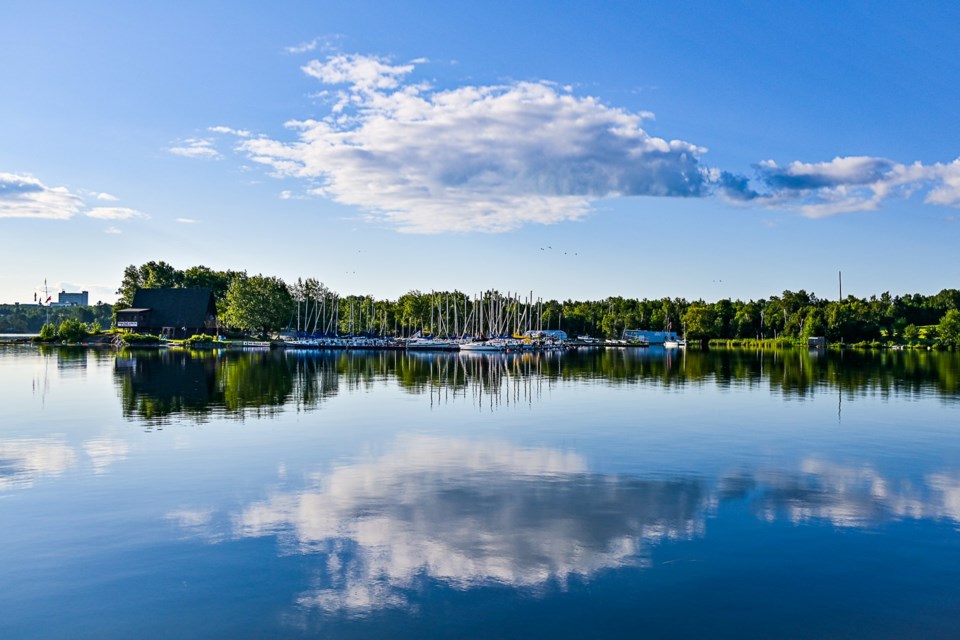The city has been doing what it can to limit the use of salt to prevent winter slips, but there’s nothing in place legislating that commercial property owners to follow suit.
So described Ward 9 Coun. Deb McIntosh during a recent city council meeting, at which she tabled a successful motion which urges provincial action.
Her motion received unanimous support.
“Winter salt use is very damaging to our lakes, the fish and the other wildlife forms living in our lakes, and the drinking water,” she said.
“Salt cannot be filtered out of our stormwater and it makes its way into our water bodies all throughout our city.”
McIntosh drafted her motion at the request of the Greater Sudbury Watershed Alliance, with their help and that of city staff.
The motion resolves:
- The City of Greater Sudbury urges the province of Ontario to work urgently with key stakeholders to develop limited liability legislation, including enforceable contractor training and a single set of provincially endorsed standard Best Management Practices for snow and ice management
- The City of Greater Sudbury urges the province of Ontario to create and fund an expert stakeholder advisory committee to advise the province and municipalities on the best courses of action to protect freshwater ecosystems and drinking water from the impacts of winter salt pollution
- This resolution be sent to the Association of Municipalities of Ontario (AMO), Ontario Municipal Water Association (OMWA), Conservation Ontario, Premier Doug Ford, Minister Todd McCarthy (MECP), Attorney General Doug Downey, Jamie West Sudbury MPP and France Gélinas Nickel Belt MPP.
In response to McIntosh’s successful motion, the Greater Sudbury Watershed Alliance issued a media release commending the action.
“Winter salt is visible in the winter months on roads, parking lots, sidewalks and driveways, but its real damage is done when it dissolves and then runs-off into creeks, rivers and lakes, with the risk along the way of causing infrastructure corrosion,” they wrote. “The harm done by visible winter salt is silently at work now in The City of Lakes.”
They also point to the Ontario Salt Pollution Coalition as a group pushing for “safe conditions for all Ontarians while respecting the natural environment.”
The City of Greater Sudbury “can take pride as an early champion” by joining other municipalities to draft similar such motions, the alliance wrote, including those in Waterloo, Miskoka, Georgina in York Region, Malahide and North Perth.
Road salt has been a topic of discussion at city hall for years.
Alternatives to sodium chloride (road salt) were sought in 2022, but city staff concluded at the time that there were no cost-effective options.
Also that year, the city issued free plastic cups intended to help instruct residents on the responsible amount of road salt to apply to surfaces to prevent slips during the winter months.
Meanwhile, the city has been working to limit the use of salt used on municipal roads, and in 2023 converted 73 lane kilometres of roads from salt to sand application for winter control.
The preamble in McIntosh’s motion offers additional context, noting that Canadian Water Quality Guidelines for the Protection of Aquatic Life 2011 state chloride should not exceed 120 mg/L, but that of the 31 City of Greater Sudbury lakes sampled in 2024, 10 are approaching this limit and one is exceeding it.
The city’s Ramsey Lake Subwatershed Study and Master Plan notes, “There has been an increase in both sodium and chloride concentrations since 1991, although most of this increase occurred between 1991 and 2000.”
Concentrations have not followed a significant upward trend since 2003, stabilizing close to 50 mg/L, but have exceeded the threshold which requires consideration by local health authorities (20 mg/L). A sodium concentration of 20 mg/L is the point at which those on sodium-restricted diets are cautioned against consuming tap water.
Public Health Sudbury and Districts reports drinking water system sodium concentrations on their website, which is available by clicking here. The highest concentration reported was at the Terry Wong Trailer Park in Chapleau, which was 154 mg/L.
It’s not until sodium hits 130-140 mg/L that it begins tasting salty.
The city’s 2024 annual water quality data report records numerous cases in which sodium levels exceeded the 20 mg/L threshold to caution those with sodium-restricted diets against consuming tap water, which is in keeping with past reports.
A national survey of 122 municipalities, which Health Canada cites, found that drinking water at the consumer's tap contained approximately 5.6 mg/L as a national median, with concentrations ranging from 0.3-242 mg/L.
Tyler Clarke covers city hall and political affairs for Sudbury.com.



